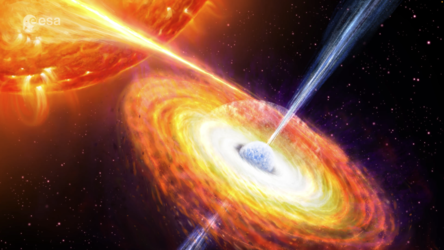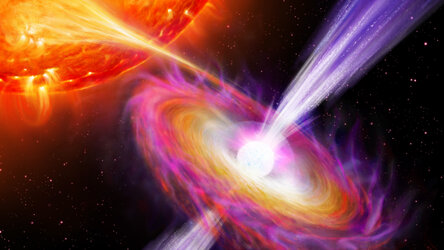Accept all cookies Accept only essential cookies See our Cookie Notice

About ESA
The European Space Agency (ESA) is Europe’s gateway to space. Its mission is to shape the development of Europe’s space capability and ensure that investment in space continues to deliver benefits to the citizens of Europe and the world.
Highlights
ESA - United space in Europe
This is ESA ESA facts Member States & Cooperating States Funding Director General Top management For Member State Delegations European vision European Space Policy ESA & EU Space Councils Responsibility & Sustainability Annual Report Calendar of meetings Corporate newsEstablishments & sites
ESA Headquarters ESA ESTEC ESA ESOC ESA ESRIN ESA EAC ESA ESAC Europe's Spaceport ESA ESEC ESA ECSAT Brussels Office Washington OfficeWorking with ESA
Business with ESA ESA Commercialisation Gateway Law at ESA Careers Cyber resilience at ESA IT at ESA Newsroom Partnerships Merchandising Licence Education Open Space Innovation Platform Integrity and Reporting Administrative Tribunal Health and SafetyMore about ESA
History ESA Historical Archives Exhibitions Publications Art & Culture ESA Merchandise Kids Diversity ESA Brand Centre ESA ChampionsLatest
Space in Member States
Find out more about space activities in our 23 Member States, and understand how ESA works together with their national agencies, institutions and organisations.
Science & Exploration
Exploring our Solar System and unlocking the secrets of the Universe
Go to topicAstronauts
Missions
Juice Euclid Webb Solar Orbiter BepiColombo Gaia ExoMars Cheops Exoplanet missions More missionsActivities
International Space Station Orion service module Gateway Concordia Caves & Pangaea BenefitsLatest
Space Safety
Protecting life and infrastructure on Earth and in orbit
Go to topicAsteroids
Asteroids and Planetary Defence Asteroid danger explained Flyeye telescope: asteroid detection Hera mission: asteroid deflection Near-Earth Object Coordination CentreSpace junk
About space debris Space debris by the numbers Space Environment Report In space refuelling, refurbishing and removingSafety from space
Clean Space ecodesign Zero Debris Technologies Space for Earth Supporting Sustainable DevelopmentLatest
Applications
Using space to benefit citizens and meet future challenges on Earth
Go to topicObserving the Earth
Observing the Earth Future EO Copernicus Meteorology Space for our climate Satellite missionsCommercialisation
ESA Commercialisation Gateway Open Space Innovation Platform Business Incubation ESA Space SolutionsLatest
Enabling & Support
Making space accessible and developing the technologies for the future
Go to topicBuilding missions
Space Engineering and Technology Test centre Laboratories Concurrent Design Facility Preparing for the future Shaping the Future Discovery and Preparation Advanced Concepts TeamSpace transportation
Space Transportation Ariane Vega Space Rider Future space transportation Boost! Europe's Spaceport Launches from Europe's Spaceport from 2012Latest

What is a neutron star?
Thank you for liking
You have already liked this page, you can only like it once!
Besides black holes, neutron stars are among the most baffling objects in the Universe.
A neutron star is formed in the last moments of the life of a very large star (with more than about eight times the mass as our Sun), when the nuclear fuel in its core eventually runs out. In a sudden and violent end, the outer layers of the star are ejected with monstrous energy in a supernova explosion, leaving behind spectacular clouds of interstellar material rich in dust and heavy metals. At the centre of the cloud (nebula), the dense stellar core further contracts to form a neutron star. A black hole can also form when the remaining core’s mass is greater than about three solar masses.
A neutron star is extraordinarily dense, packing more mass than the entire Sun (1.5 to 2.5 solar masses) in a globe with a diameter of 10-15 km (about the diameter of a city like Paris). Its density is so high that a sugar cube sized object of neutron star material would weigh as much as all the people on Earth.
Due to extreme pressure, the electrons and protons present in normal matter fuse together with the result that these exotic stars are composed almost entirely of neutrons. This ‘neutron compound’ generates enough force to support the inward pressure of gravity.
Newly formed neutron stars have extremely strong magnetic fields; thousands to billions of times more intense than any magnetic field we can generate in our labs. Often neutron stars are also rotating extremely fast (completing up to hundreds of revolutions per second) and beam light at radio wavelength from their magnetic poles. This beam can be detected by radio telescopes only when it is pointing toward Earth, similar to the way a lighthouse can be seen only when the light is pointed in the direction of an observer. Because of this, the radio signal appears to be pulsating and these neutron stars are called pulsars.
When a neutron star and a normal star are orbiting each other at a close distance, the neutron star can suck material away from its companion. This material falls with a high speed onto the collapsed object, becoming extremely hot and releasing energy in the form of X-rays. The star’s powerful magnetic field interact with the blazing gas and can form jets. Systems that consist of a neutron star ‘feeding’ on a normal star are known as X-ray binaries.
[Image description: At the centre of the image, there is a very bright white-blueish ball, representing the neutron star, with white/blue filaments are streaming out from its polar regions, representing magnetic field lines. Some filaments loop around the centre ball, connecting the magnetic north pole to the south. Two blueish beams stream out the two opposite poles towards space. The deep blue background depicting deep space is dotted with small bright-white spots symbolising stars.]
-
CREDIT
ESA -
ACKNOWLEDGEMENTS
Work performed by ATG under contract for ESA -
LICENCE
CC BY-SA 3.0 IGO or ESA Standard Licence
(content can be used under either licence)

A neutron star

Nuclear explosions feed a neutron star’s jets

Nuclear explosions on a neutron star feed its jets

Quick-cooling oddballs rewrite neutron star physics















 Germany
Germany
 Austria
Austria
 Belgium
Belgium
 Denmark
Denmark
 Spain
Spain
 Estonia
Estonia
 Finland
Finland
 France
France
 Greece
Greece
 Hungary
Hungary
 Ireland
Ireland
 Italy
Italy
 Luxembourg
Luxembourg
 Norway
Norway
 The Netherlands
The Netherlands
 Poland
Poland
 Portugal
Portugal
 Czechia
Czechia
 Romania
Romania
 United Kingdom
United Kingdom
 Slovenia
Slovenia
 Sweden
Sweden
 Switzerland
Switzerland

























